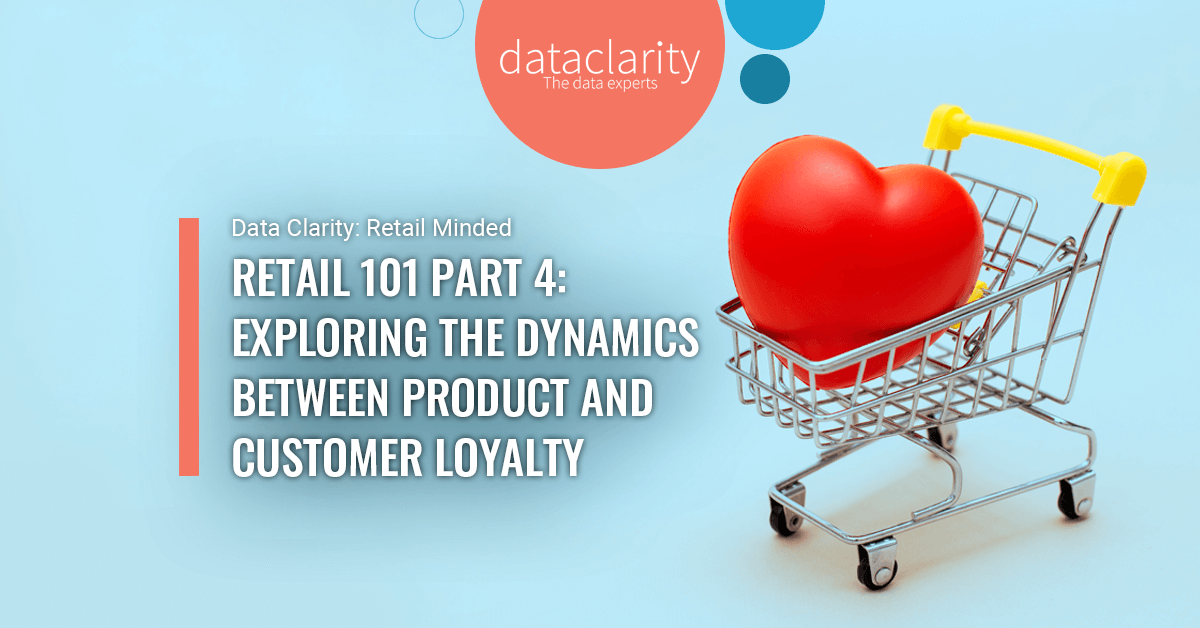Retail 101 Part 4: Exploring the Dynamics between Product and Customer Loyalty
2nd June 2023
Curious about the key factors that drive customer loyalty and keep them returning to thriving businesses? Discover the inside scoop on the strong bond between product and customer loyalty. This is the fourth and final part of our Retail 101 series to discover effective strategies to enhance customer acquisition, retention, and engagement that includes:
Part 1: Know and reach your customers with segmentation
Part 2: Gather a single, accurate view of your customer
Part 3: The value of customer lifetime value
Understanding the correlation between products and customer loyalty is vital for businesses. By analysing this relationship, companies can identify which products contribute to customer loyalty and drive repeat purchases. It allows businesses to differentiate between products that create long-term, loyal customers and those that only attract one-time buyers. This insight enables businesses to focus on strategies that promote customer loyalty and increase overall customer retention.
Why is the relationship between product and customer loyalty significant to long-term strategy?
How do organisations earn and keep customer loyalty? Through a long-term strategy, not a short-term reaction. While some may already be aware of your top-selling products and categories, there is a wealth of valuable insights to be gained from leveraging the power of data:
- Identify the true heroes among your product range: The ones that generate the highest number of subsequent orders and foster customer loyalty, you can differentiate them from one-hit wonders that only attract one-time customers. Leveraging this insight empowers you to increase repeat purchases and drive sustainable growth.
- Identifying High-Performing, Underperforming, and Hidden Gem Products: Which products are performing strongly, and which ones are underperforming? Which products receive high views but have low sales? And which products are hidden gems with low views but high sales? It’s important to bring these products into the spotlight and maximize their potential.
- Identify products which lead to the fastest time to second order: Understanding which products and categories drive the fastest time to second order is essential for businesses aiming to enhance customer loyalty and repeat purchases. By analysing the data, those can identify which products have significant impact on engagement and satisfaction. By focusing on these high performers, marketers can optimise their marketing strategies e.g., discounts to enhance customer experiences and lock in long-term loyalty.
- Identify different customer segments: Which products have been bought by different segments? Or, which had the worst return rate by customer segment? Understanding the patterns of when, where and why these behaviours occur enables organisations to tailor their marketing efforts, improve product offerings, and provide targeted solutions to address specific segments.
- Identify your best-selling product combinations: By understanding which products are frequently purchased together, businesses can leverage this information to create enticing bundle offers, cross-selling opportunities, or product recommendations. Analysing the data on product combinations allows companies to uncover valuable insights into customer preferences, behaviours, and potential upselling opportunities.
With the appropriate technology, you can effortlessly obtain the answers to these questions, plus obtain a 40% increase in sales due to marketing and campaign optimisation. To know why, read here.
Big data has changed the way marketing and sales teams engage with customers. It has changed the way businesses market to their customers, which in turn, helps companies increase their profits. Marketing teams recognise the value of data insights in shaping marketing strategies, personalisation efforts and website optimisation tactics.
Embracing technology and leveraging data insights empowers marketers to stay ahead of the competition, drive better results with a laser-like focus on customer value creation, and achieve their business objectives.
Every business has unique drivers when designing and implementing a full data strategy. Business leaders and sales and marketing teams will need to work closely with IT teams to ensure that every user can get access to the data they need to ultimately lock-in loyalty.
If you’d like to be reminded when new blog posts are published, follow us on LinkedIn.
